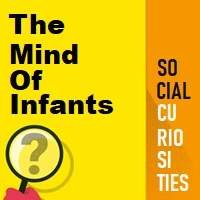
The Fantz’s Looking Chamber and the Minds of Infants
In 1961 Fantz aimed to better the understanding of what occurs in the minds of infants by observing what they pay attention to most as an indication of what they are interested in. The study conducted by Robert L. Fantz at the University of Illinois is among the simplest, yet most important in the field of infant development and vision.
When this experiment was conducted, there very few ways to study what was going on in the mind of an infant.
Fantz realized that the best way to figure out this puzzle was to simply watch the actions and reactions of infants. He understood the fundamental factor that if there is something of interest near humans, they generally look at it.
In order to carry this out, Fantz devised the ‘looking chamber’. This looked similar to an MRI machine but had patterns hung from the top of it for babies to look at.
The Experiment
The infants were placed in the machine and shown the two different patterns (a bull’s-eye and a human face) and the time they spent looking at each pattern was recorded with the researcher looking through a hole at the top to look at the image reflected in the infant’s eye to determine this.
The length of time infants spent looking at each pattern would be recorded and compared to decipher what shapes attracted infants the most. This paradigm measures the habituation of infants: looking at what draws their attention and distracts them most.
There were two main studies for this paradigm conducted by Fantz.
In one study it was found that a 2 month old infant would typically look at the human face for twice as long. Infants also preferred typical faces to scrambled ones.
Other studies have shown that from one month old we can follow slow moving objects and comprehend when they are moving away from us. From 3 months of age we can tell our family members apart.
From 2 days old infants prefer to look at patterns (like bull’s-eyes and faces) rather than coloured discs and this trend was present at 2-3 weeks old as well.
This suggests that human babies have some powers of pattern and form selection. Before this experiment it was thought that babies looked out onto a chaotic world of which they could make little sense.


